Meeting sensory needs can be tricky to say the least. Sensory input is so complex because what works for one student may not work for another student. And what worked yesterday may not work today. Sensory needs evolve and change over time as needs change too. I always try to remember two things when it comes to meeting sensory needs in the classroom.
First, it is important to identify the type of need. For example, if a student is spinning, rocking, or swaying there is a chance they are seeking vestibular input. You need something that will provide input in that specific area.
Second, try to keep a variety of inputs available at all times. In other words, multiple forms of sensory input should be available for students to explore, discover, and independently utilize to self regulate. I never know what my students needed until I offered a wide variety
I’ve put together the sensory input activities and or objects that I have used in my classroom over the past three years. My hope is for this post to give you some ideas to try in your classroom too!
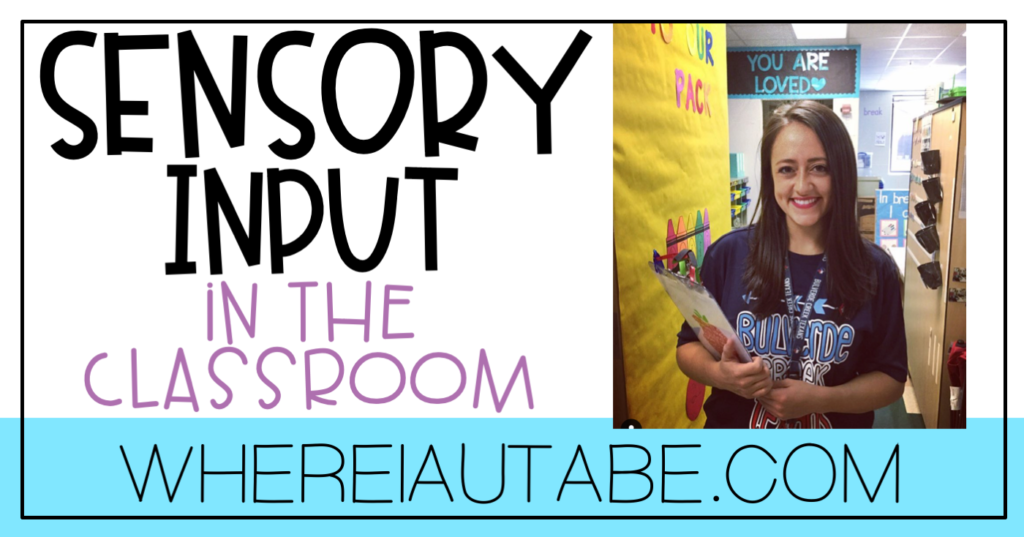
Visual Input
This form of sensory input includes things that stimulate the eyes. Think lights, color, and movement. A few classroom favorites include spinning toys and the classroom bubble panel. Yes, sensory equipment can get very expensive. Don’t feel like you NEED these things to be successful. You can get creative and DIY so many things out there! Below I have linked a few other commonly used items that offer visual sensory input.
- Christmas lights. Snag them on sale at the end of each holiday season!
- Spinning projector light.
- Dancing toys
- Acrylic Mirrors. Acrylic is key because they are pretty indestructible!
- Light Covers. Especially if you have students who are sensitive to florescent lights. I like to try different lighting in my room with lamps too.
Auditory Input
This type of sensory input includes what hearing receptors are processing. Think sounds and vibrations. There was a point in time in my classroom when iPads became problematic. I had to decrease iPad time because they were a trigger for some behaviors. I quickly realized that those iPads were offering sensory input through the sound (and light) that comes from them. Instead of increasing the iPad time, I had to find an auditory input replacement. Hence the old fashioned boombox that lives in my classroom. I had a student that needed the sound of music. Obviously this sound is something that might bother other students so the solution to that was these bluetooth headphones. Here a few more ideas for auditory input:
- Noise cancelling headphones for students who are sensitive to sound
- Talking hamster that repeats what you say. For the students who love when you repeat something. This gives students immediate feedback that doesn’t involve you (more independence).
- Timers that show end times for noisy environments (cafeteria/assemblies).
- Have a variety of instruments available to explore during break times! Some students like to create their own soothing sounds. Check garage sales, Goodwill, or even ask your music teacher for instruments!
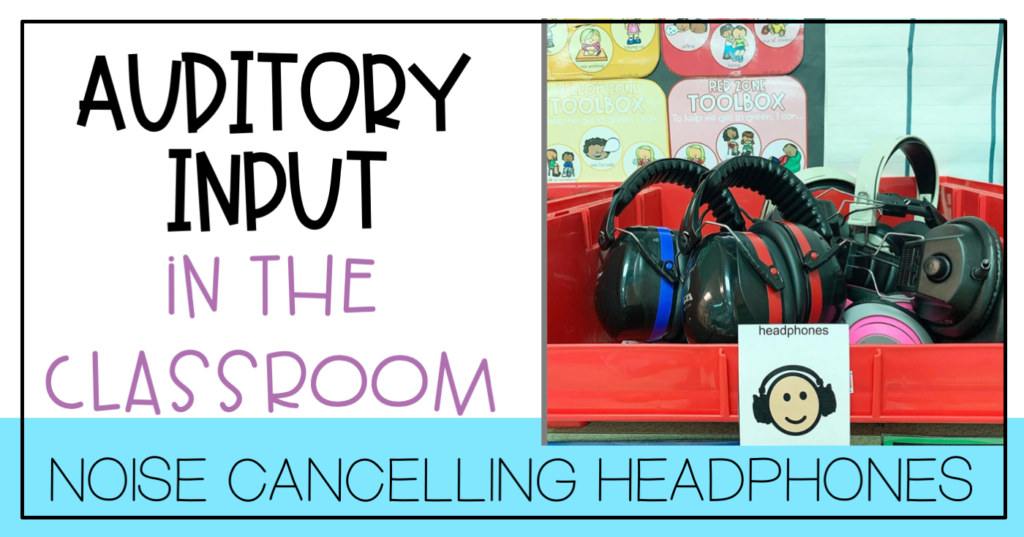
Olfactory Input
This is the perception of smell and a type of sensory input that is often forgotten. Something to remember is that smells can be paired with feelings of security. When I think of my childhood home, I think of the smell of Mexican food. When I smell this, it makes me feel at home and safe. The same goes for smells that are tied to being scared or uncomfortable. This year I discovered scented spice bottles from a SPED teacher on Instagram. These bottles offer olfactory input for less than $2. Simply keep your old spice bottles, wash them, and place a piece of wax melt into it. I keep a few scents out at a time and switch it up to keep them interested. Here are a few other ideas for olfactory input:
- Scratch and sniff stickers
- Essential oils in cotton balls
- Scented markers
- Scented bubbles
- Lotion
- Sorting by smell
- Scented play dough
*I always get parent permission/consent to use any sort of scented materials due to possible allergies.
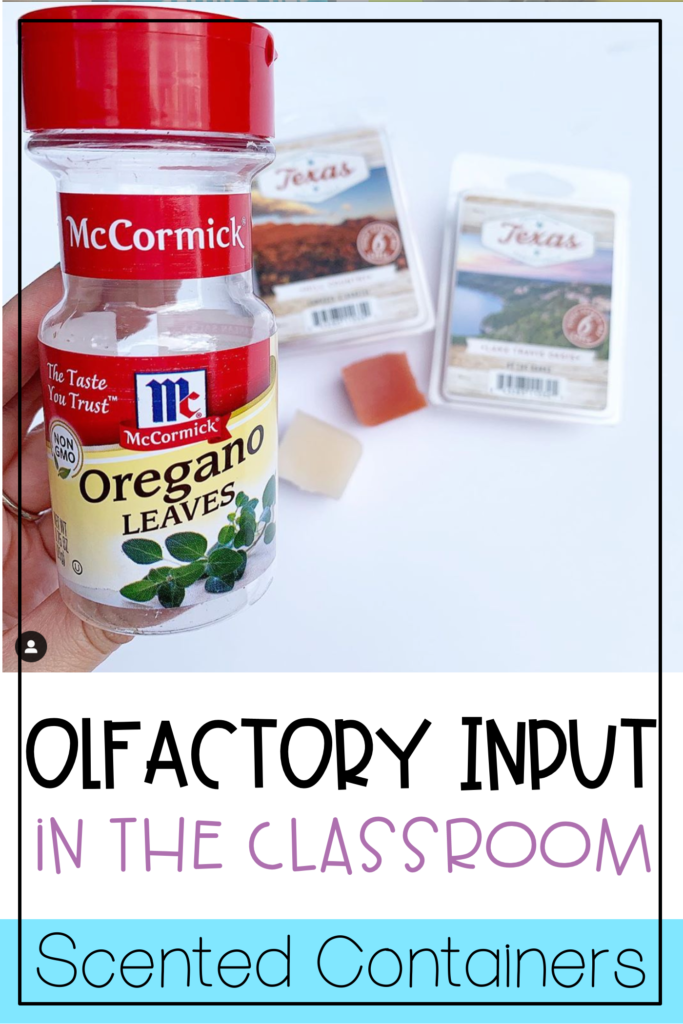
Gustatory Input
Watching every classroom object go into a student’s mouth (hello germs) used to frustrate me! I quickly began to realize that it feels good for them and fulfills a sensory need. In my classroom (and with parent permission) I try alternating snacks throughout the day to offer a variety of gustatory input such as yogurt in the morning (soft and cold) breakfast bars in the afternoon (chewy) and pretzels or goldfish after lunch (crunchy). This allows the stimulation of different textures. Some other ideas for gustatory input include:
- Chewable jewelry
- Handheld back massager that students can place on their jaw/ or teeth
- Vibrating toothbrush
- Blowing on pinwheel
- Crunching on ice
*For gustatory input I also keep communication open with parents due to possible allergies!
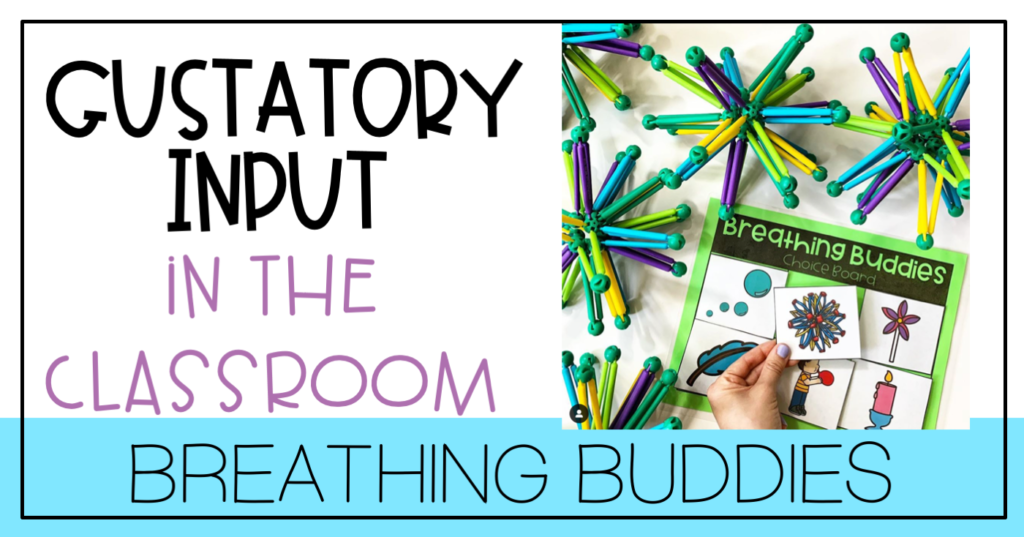
Tactile Input
This is easily my favorite form of sensory input to provide because it’s the easiest to switch up. Possibilities are truly endless here! From different types of fidgets to the endless textures available like slime, play-doh, water beads, and so much more. The classroom favorite way to receive tactile input is through sensory bins. I get all of my sensory bin inspiration from Katy. She is a must follow on instagram! A few other ways we offer tactile input are:
- Water play. We always make sure students have extra clothes before starting this!
- Velcro strips. We add a strip of hard velcro to certain desk for students to touch and feel.
- Variety fidget packs. I only ever offer one fidget at a time, but these are great because they come with a variety that you can offer to your students and rotate out.
- Plastic beaded necklaces
- Fuzzy bathroom carpets. These are amazing and can be found for less than $10 at Ross or Marshall’s!
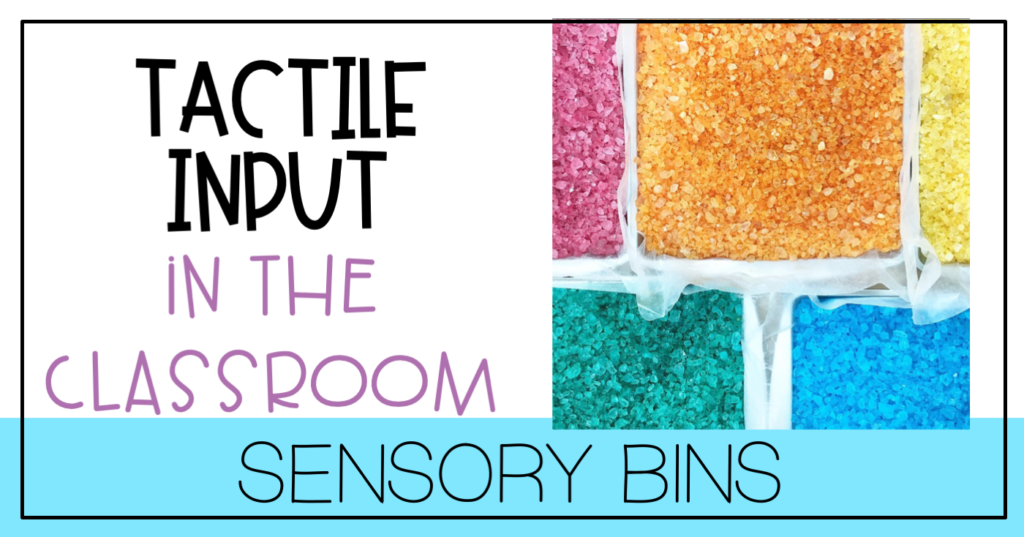
Vestibular Input
You can think of vestibular input as movement or the sense of motion. In a dream world, my classroom would look a-lot like a playground or a jungle gym. I see what my students do at recess to meet their needs. They climb, swing, jump, hang upside down, and run. Have you ever just watched what happens when they have full access to the playground? They love and NEED movement. My OT and I have had endless conversations on how to increase this type of input in my classroom. Here are a few ideas that we provide indoors:
- Scooters. Don’t forget to ask you PE teacher to borrow equipment like this!
- Sit and spins
- Stepping stones
- Trampolines
- Office chairs (great for spinning indoors)
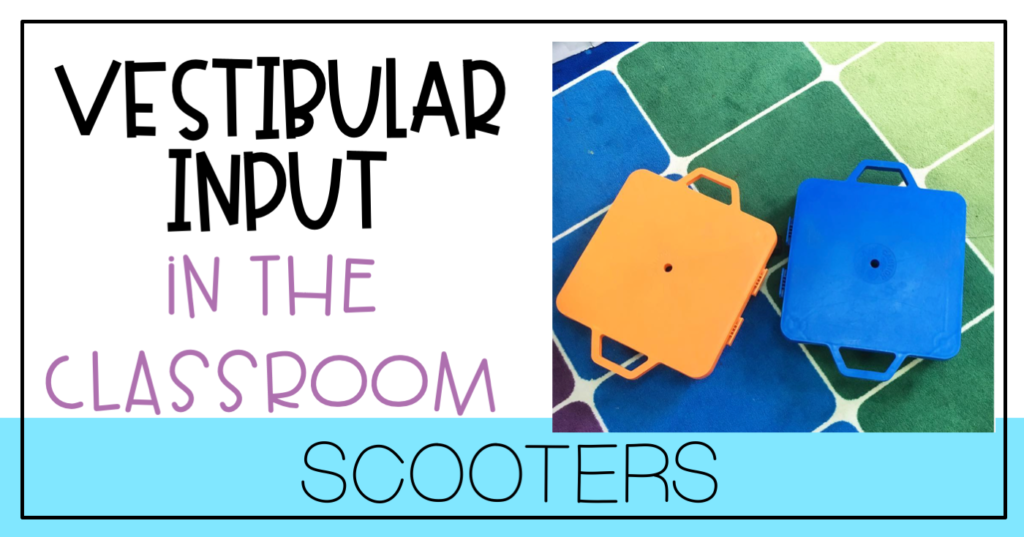
Proprioceptive Input
This is the sense of joints and muscles obtained by movements such as lifting, pushing, pulling etc. I am not lying when I tell you that yoga balls have offered my students the majority of their proprioceptive needs! We have 6 yoga balls. Yes, 6, you read that right. I keep all the yoga balls in one central location called break space. The kids will roll forward, backward, sideways, bounce, and kneel, to fulfill their sensory needs. Here are a few other ideas for proprioceptive input:
- Lifting. Think medicine balls, weighted vests, weighted backpacks
- Squeezes. Some students love deep pressure. We teach them to request a squeeze.
- Pushing. We have backpack wagon and have had some students push or pull this during transitions.
- Steam Roller. By far the most expensive sensory equipment I have come across, but provides adjustable pressure.
- Wiping down table at the end of the day.
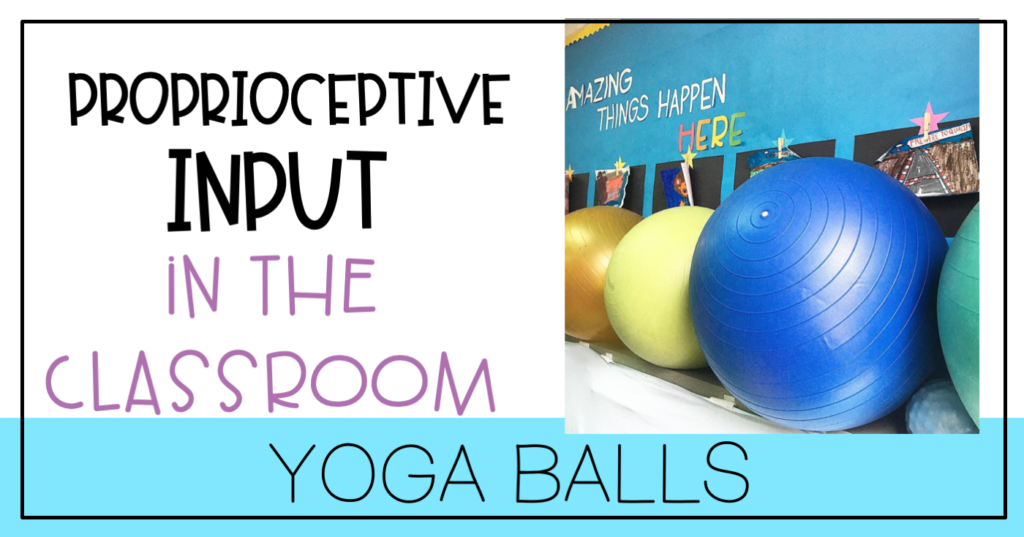
I know this is all tons of information, but it’s definitely necessary think about before setting up a classroom. Try your best to hit these different sensory input areas so that you can offer the most input to your students. In my experience I have found that sometimes you don’t even know what they actually need the most until you offer it.
Be sure to check out my other SPED teaching tips!









I am so thankful for this valuable information!
You are so welcome!! Thank you for reading and following along! Best of luck with your next school year! <3